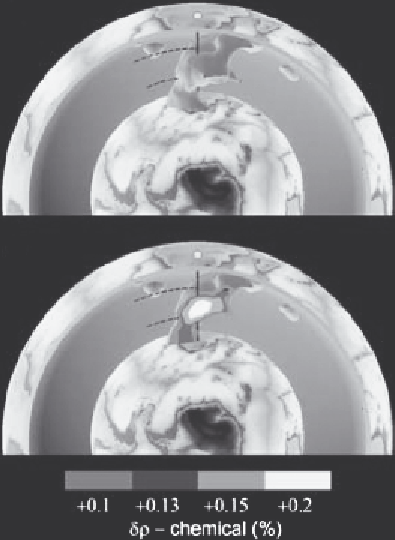Geology Reference
In-Depth Information
(a)
(b)
Figure 8.8. Visualisation of the thermochemical structure under Africa. (a) View
exhibiting a plume-like morphology with a large-volume rounded structure centred
at 1800 km depth directly beneath the southern African continent. (b) View of the
interior of the structure where a positive chemical density field is inferred. After
Simmons
et al.
[104]. Copyright by the American Geophysical Union.
A later variation was that small-scale convection is driven by instability of the
lowest, softest part of the lithosphere [127]. However, it was assumed rather than
demonstrated that the lower lithosphere had the requisite mobility, the thermal
boundary layer being assumed in that study to have a stepped viscosity structure.
Subsequent evaluation using a more appropriate temperature-dependent viscosity
[128] showed that it is far from clear that such convection would have significant
amplitude, or even occur at all.
The proposal for an upper-mantle scale of convection, that is for cells of about
650 km depth and a comparable width, encounters the topographic constraint
already discussed for any form of upper-mantle convection: there ought to be
substantial topographic signatures of the upwellings, comparable in magnitude to
the mid-ocean ridge system and spaced about 1300 km apart. No such topography
is discernible in Figure 2.4, and none has been convincingly demonstrated [129]
by more sophisticated attempts to find it [130].

